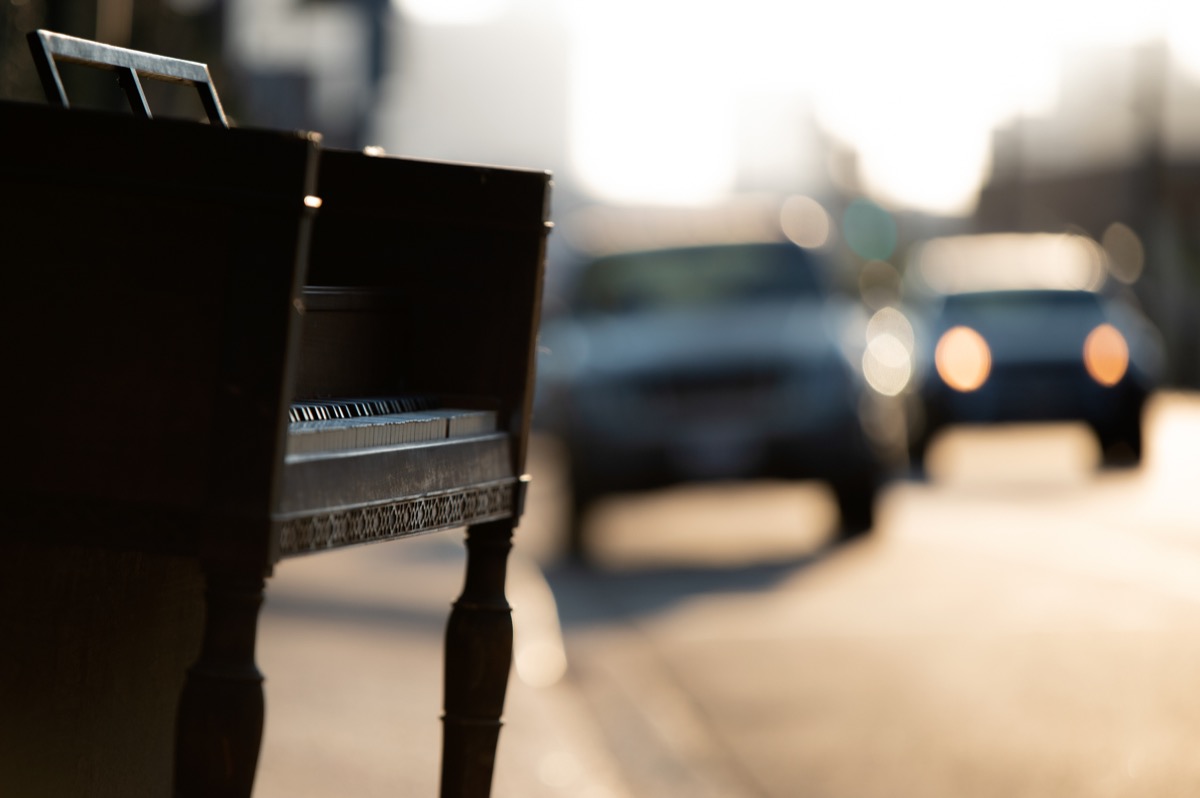
All the days following Thanksgiving celebrate our prodigious gift for shopping. “Black Friday,” whose name dates back to 1966, is followed by the newly minted “Small-Business Saturday” and then a quiet pious day to get rested and prepared for “Cyber Monday.” That’s the day you’re supposed to continue fueling the economy while on the clock at your job ostensibly doing something else. “Giving Tuesday” stands at the end of the line, ringing its bell and giving you the guilty side eye after all this consumerist bacchanalia.
It’s easy enough to sigh in anguish, á la Charlie Brown, about the rampant consumerism, but a little empathy may be in order too. After all, for a stressed-out, disconnected, compromised human organism, shopping is a dopamine-triggering easy pleasure. Through the 20th century, it became the way comfortable modern people in comfortable modern societies expressed their comfortable modernity. By now, shopping is such a native skill that we interpret much of how we experience our world as acts of “consuming” and “collecting.”

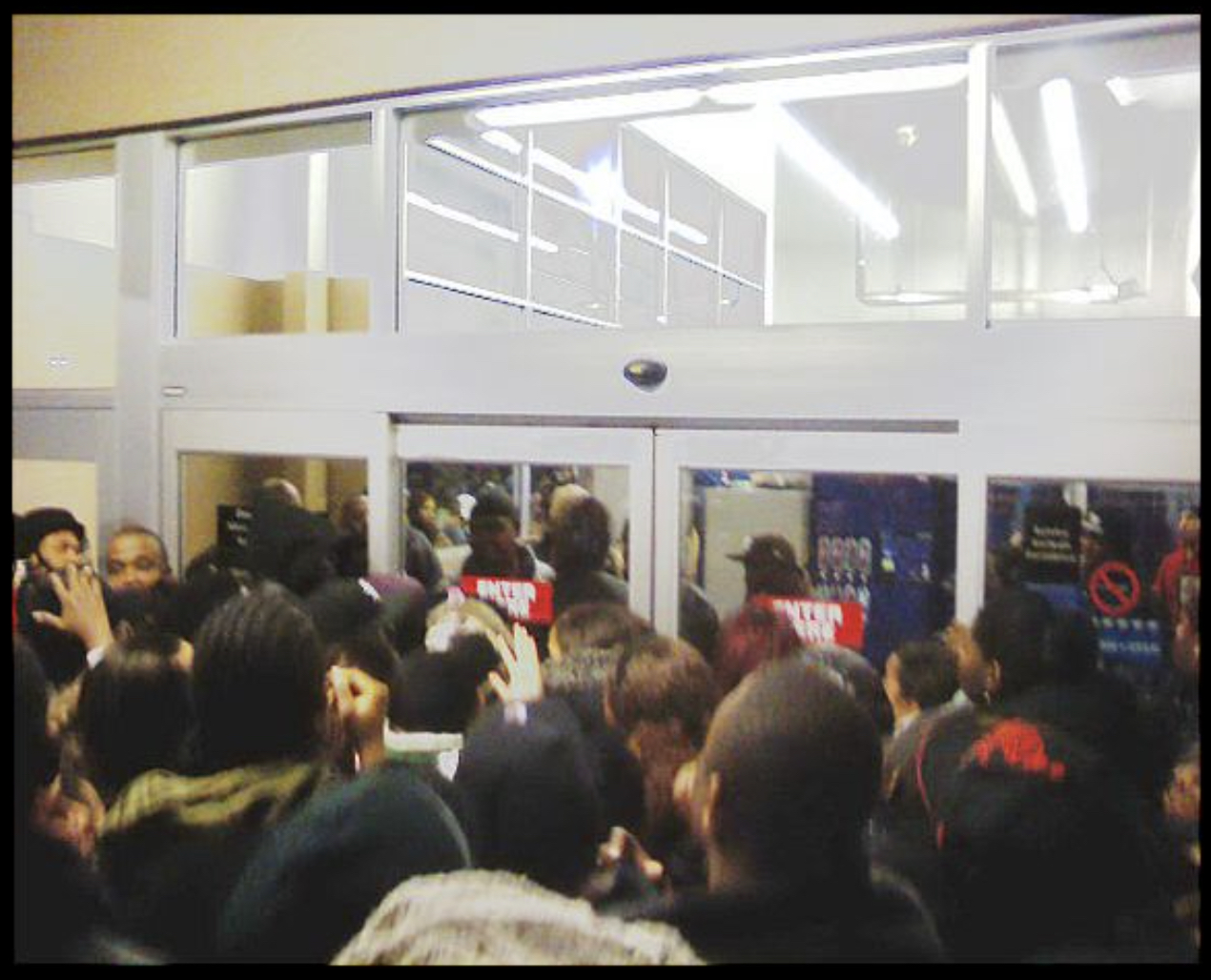
Left: 1918, watching Santa climb from his parade float into Eaton’s Department Store, Eaton’s Santa Claus Parade on James Street, Toronto. Right: 2008, iconic image from just prior to a shopping stampede at a Long Island Walmart, which killed one shopper and injured four others, according to the Black Friday Death Count. (Eaton’s / Augustine for News)
The 21st century added to the recipe: plentiful plastics, round-the-clock R&D, disposable LEDs, 24/7 marketing, microchips as cheap as potato chips, and a competitive international labor market. So today, we consume all products as consumables. We consume everything as if it’s disposable. We’re a big machine for converting raw materials into landfill.
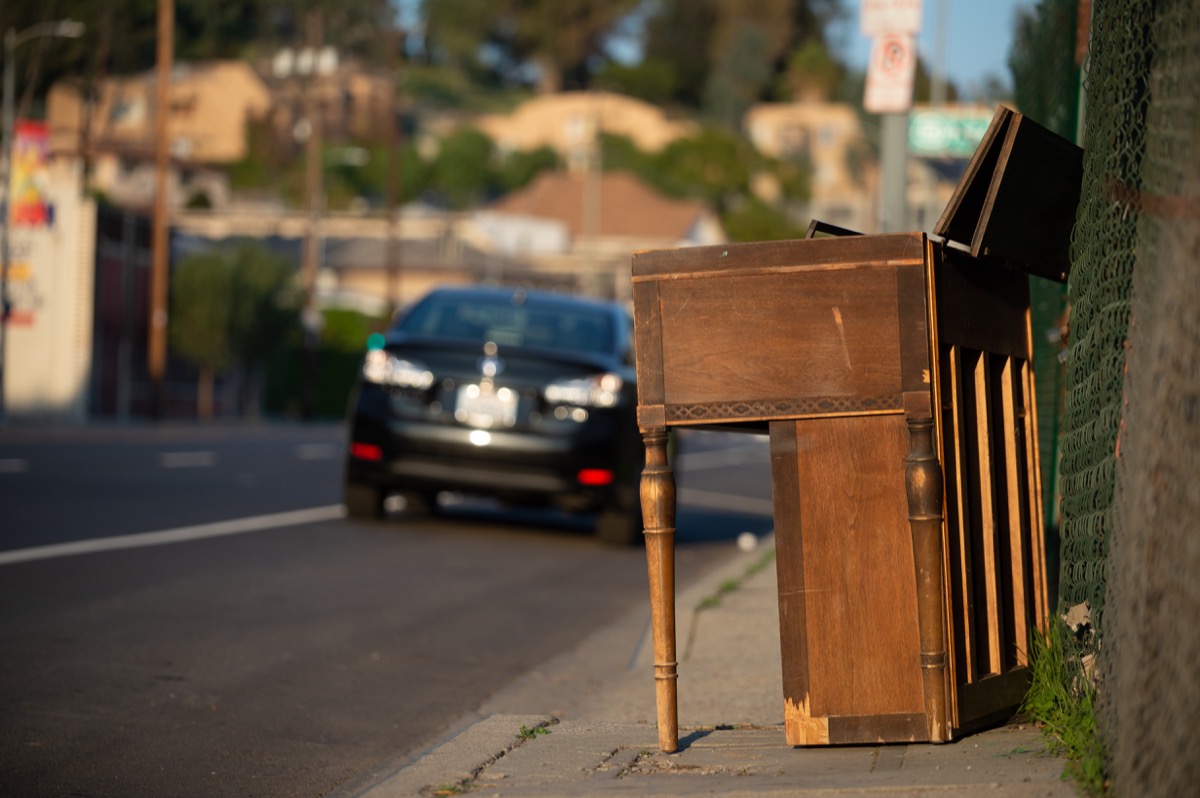

Broadway, downtown Los Angeles: it’s often cheaper to buy a new piano than to repair an old one… so we mine some new metals and harvest some trees to keep the music playing in the drawing room. But what’s to become of the family heirloom?
That said, if the 20th century turned human beings into consumers, it’s not the worst new skill we learned. And maybe we don’t need to be so Charliebrowniest about something that is, after all, a skill… and a big chunk of the economy. Maybe it all just needs a new purpose.
Shop ’til We Drop — for the Climate?
We climate evangelists are supposed to preach against consumerism, but the message isn’t that simple — since many climate solutions seem to demand that we make and buy new things.
In fact, climate mitigation is shaping up to be an orgy of consumerism. To turn the page on internal combustion, everyone’ll be buying new electric or hydrogen cars, motorcycles, trucks, scooters, and whatever people-movers come ’round the corner next. To transition from natural gas, we’ll scrap our gas heaters, water heaters, and stoves, and head out to buy new electric models. To clean the grid, we’ll cover all our roofs with solar panels and mount giant batteries on the wall to compensate for unsteady photovoltaics and wind turbines.
Those photovoltaics and wind turbines will need unprecedented volumes of new metals and minerals. Plus, depending on whom you ask, we can’t forget to swing by the uranium shop to fuel the new fleet of little modular next-generation nuclear plants that will help break the natural-gas addiction we’re now acquiring.
In other words, it’s time to shop ’til we drop… for the climate! But it means rethinking the rest of our shopping, and the 69 percent of the U.S. gross domestic product that it represents.
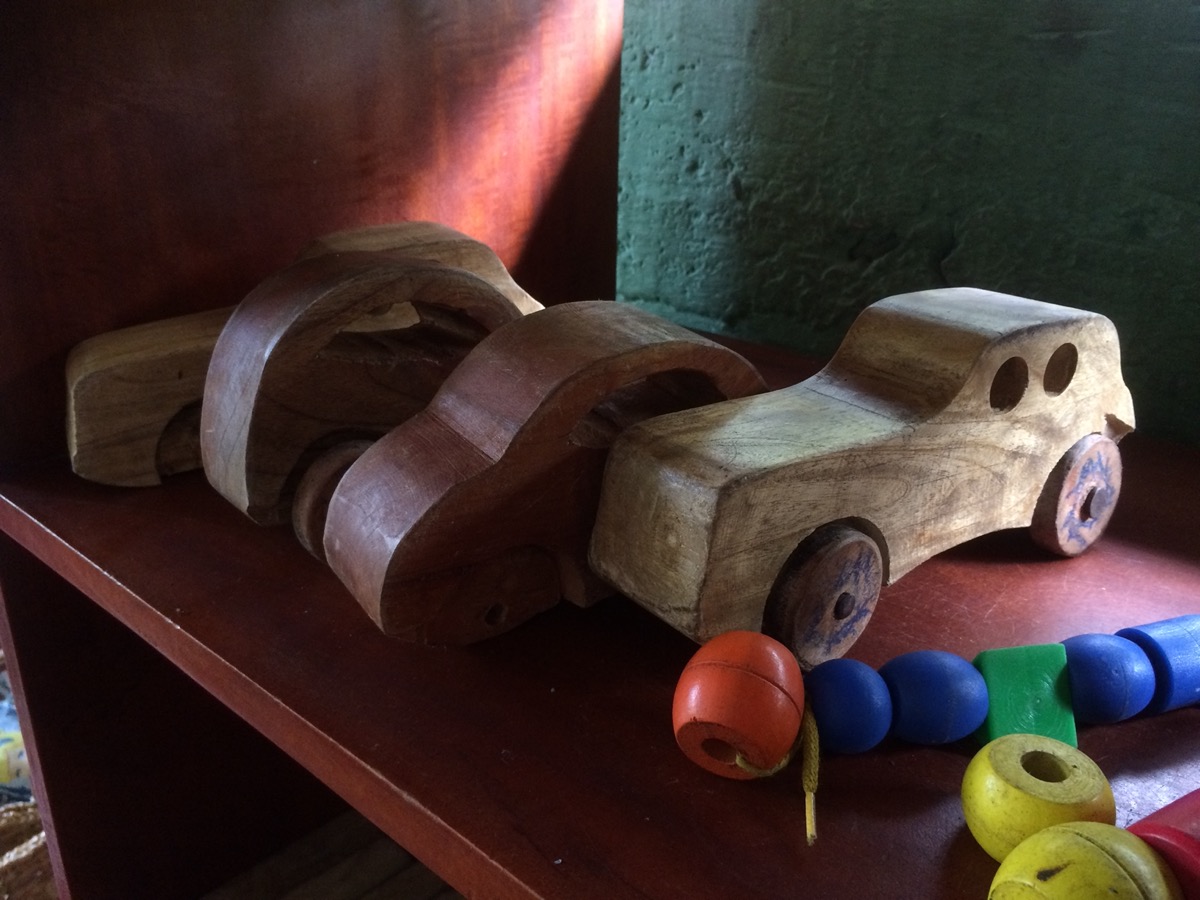
Do We Even Like Our Toys?
According to research (of which here is some), we’ve been giving babies and toddlers toys they like less and less with every passing decade. If given a choice, babies and toddlers will reach for simpler toys with logical feedback over complicated plastic items that do unpredictable things like bleep and flash. Generally, young children prefer things like blocks, bowls, and natural materials to the latest plastic branded product. Babies get seemingly endless satisfaction from testing Newton’s laws of motion with easily conceived, tactile objects. And, if given blocks they can stack, they can do things like collaborate at much younger ages than expected. In other words, kids like simple, natural toys better, and those toys are better for them.
As for the rest of us, it’s fair to ask ourselves whether we like our toys as much as we think we do. For one thing, if we like our things so much, then why do we constantly replace them? To paraphrase the Grinch, maybe satisfaction “doesn’t come from a store.” How many bottle openers do we need? How many place mats? Bungee cords? T-shirts commemorating our every achievement? Outdoor speakers shaped like rocks? Stuffed animals? Does everyone in the neighborhood need a ladder that we use once or twice a year? How frequent must be our new televisions, computer monitors, tablets, bluetooth speakers, and all the wires that tie them all together?
What do we really want to play with? How about the time we would gain from not working to buy more things? How about experiences? We’ll leave these bigger questions for another time.

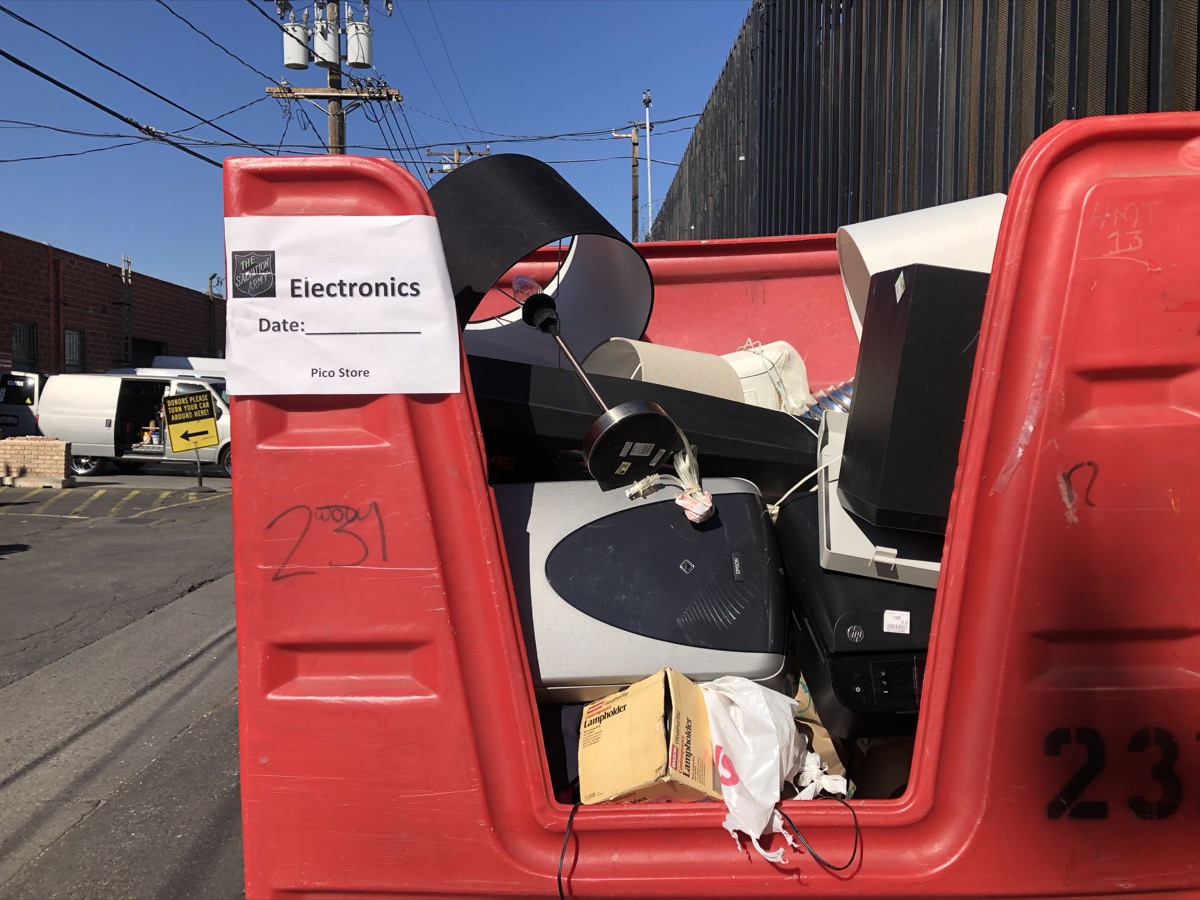
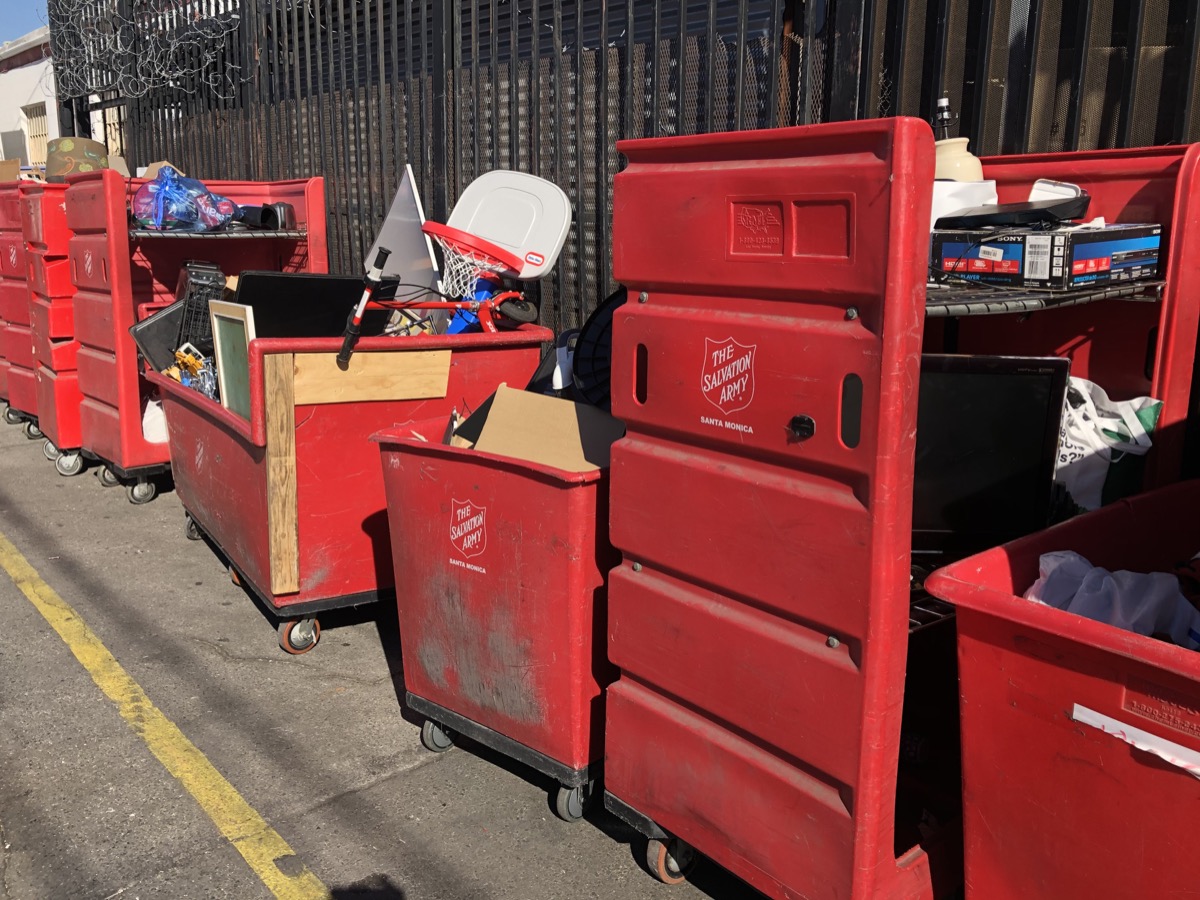


Santa Monica Salvation Army: STUFF. Formerly raw materials peacefully stored in the earth’s crust; then, dopamine-inducing purchases; then, awkwardly waiting to be sorted on the way toward the landfill. As for the bale of clothes at the bottom — the average American throws away 81 pounds of clothes a year. Empathy stops here. This has to stop.
Sacrifice?
Moving into the coming phase of climate action, climate communicators tiptoe around the word “sacrifice.” Is this a “war footing” we’re going to be on, where we need to ration butter and turn in our extra ladders to be melted down into offshore windmills? Or, is it a man-on-the-moon effort requiring of the public a lot of cheerleading and modest behavioral changes?
If we all agree we need to reach “net zero” by 2050 (we do), and have to get perhaps halfway there by 2030 (we do, because the other half will be more difficult and require twice more time), how do we approach the easy sacrifices (“I no longer need a commemorative t-shirt every time I attempt a half-marathon”) and do we approach the harder ones (“I can no longer eat food that pleases me”)?
A Clue from Covid-19
In this month’s Foreign Policy (subscribing online-only now for the climate!) Max Ehrenfreund reported a clue in the economics of American survival during Covid-19 — “The World’s First Affluence Recession: The pandemic is making Americans poor—precisely because of the way they were rich”:
The modern economy has been immune to infectious disease—until now. Epidemics in the modern world have ruined hopes, debilitated bodies, and claimed tens of millions of lives. This [is] the first epidemic in American history that has also caused an economic crisis. Between April and June, about $2 trillion of economic activity in the United States came to a halt. Adjusting for changes in prices, that was nearly one tenth of gross domestic product. Even though public-health authorities and ordinary people took similar steps to stop past epidemics from spreading, none had remotely comparable effects on the economy—not cholera, which struck repeatedly in the 19th century; not the fearsome bubonic plague, which visited San Francisco in 1900; not even the so-called “Spanish” influenza that arrived in the United States in 1918 and killed tens of millions internationally.
What has made this pandemic unique is that for the first time, consumers worldwide can afford to spend a significant share of their incomes on non-essential goods and services. Much of their consumption has become optional, and rather than risking death to buy a Frappuccino, they’ve chosen to stay home. Others would like to go out, but public-health authorities have ordered non-essential businesses to close. Because the discretionary share of consumption has expanded, the choices about non-essential business that governments and individual consumers make in response to pandemic disease have become an economic problem.
The shift in the makeup of economic activity is due to decades of transformative economic growth. Previous epidemics did not cause economic crises because most consumers were poor by today’s standards, and their discretionary spending was minimal. The overwhelming demand for necessities such as food and clothing, which neither households nor governments could restrict in the interest of public health, kept the economy going. Today’s economy depends on a thousand luxuries large and small, from overpriced coffee to air travel, and these luxuries are what many consumers are now giving up. Willingly or not, they are saving instead of spending. Extreme savings rates are a defining feature of the available data on the coronavirus economy.
The public-health crisis is the result of a novel pathogenic coronavirus. But the economic crisis is a result of our affluence. Growth has created both extraordinary prosperity, and previously unknown risks.
(Quoting excessively because there’s considerable guidance here.)
So, how much disposable income is disposable in trade for our future?
How shall privileged humans spend money and time for the rest of this decade? How shall they act for the next three decades while we bring ourselves back into harmony with the earth that sustains us? How shall we choose to design a future that features the luxury of assuming that great-grandchildren will still be able to live with the comforts enjoyed by their great-grandparents?
We can shop thoughtfully, deliberately, and with purpose for the future we want. And, we must.
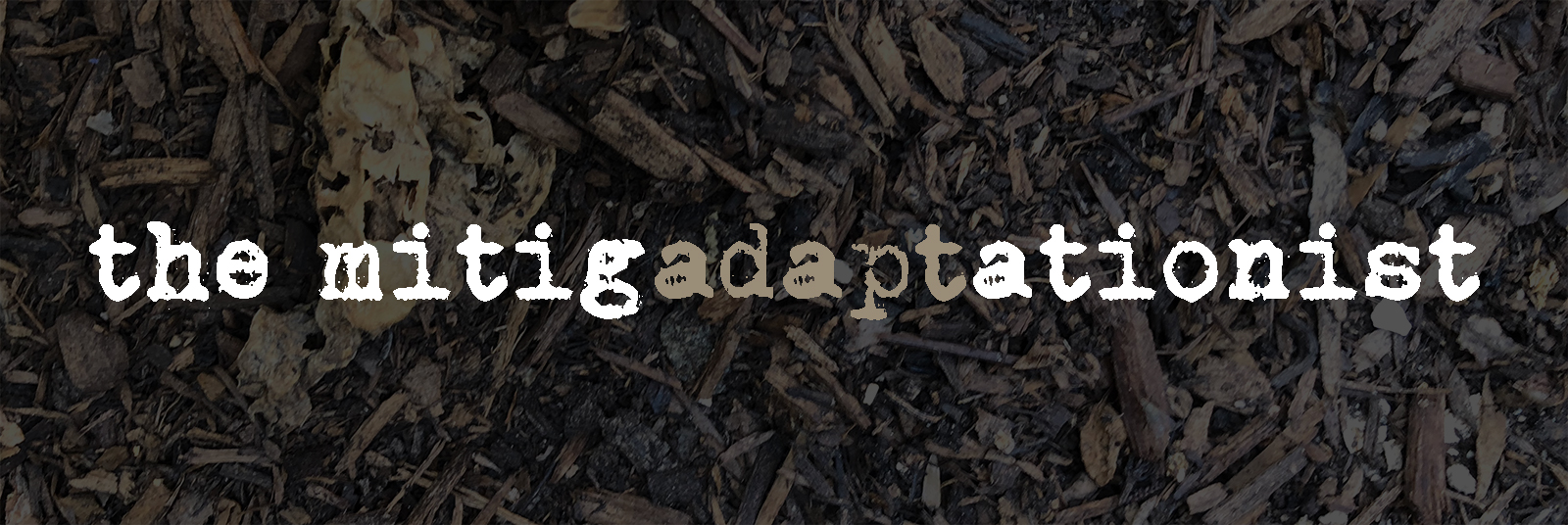
0 Comments